Art: Painting
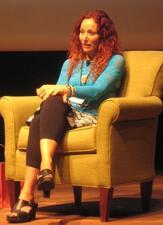
Aline Kominsky-Crumb
Aline Kominsky-Crumb was a pioneer of the autobiographical comics genre and a leading figure in the feminist underground comics movement. Her career as a cartoonist began in 1972, when she joined the Wimmen’s Comix collective in San Francisco and published her first comic Goldie. A Neurotic Women. She went on to author, publish and co-edit several books and magazines, including the comics anthology Love That Bunch (1990), and the graphic Memoir Need More Love (2007).
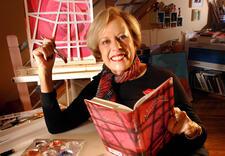
EL Konigsburg
Elaine Lobl Konigsburg is best remembered from her many beloved children’s novels, including The Mixed-Up Files of Mrs. Basil E. Frankweiler, Jennifer, Hecate, Macbeth, William McKinley and Me, Elizbeth, and The View from Saturday. Her novels and her characters reflect the angst of growing up in a middle-class world and finding your way, no matter where you come from.

Beryl Korot
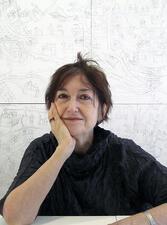
Joyce Kozloff
Joyce Kozloff is an internationally recognized painter, public muralist, and feminist whose long-term passions have been history, culture, and the decorative and popular arts. One of the founders of the pattern and decoration movement, Kozloff is dedicated to creating her own work and giving the folk art of women of color a voice. Kozloff is known as one of America’s more original and engaging artists.
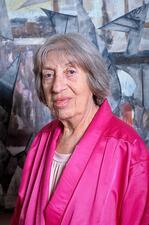
Lee Krasner
The child of Russian-Jewish immigrants, Lee Krasner was a staunch supporter of the integrity of modern art and one of the only painters in New York to work in abstract style before World War II. Despite putting her career on hold for years to aid her famous husband, Jackson Pollack, Lee Krasner achieved recognition in her own right as a gifted abstract painter.

Gertrud Kraus

Doris Barsky Kreindler
Vigorous, rapid, and exciting use of the palette knife is not usually associated with women painters in any era, but Doris Barsky Kreindler’s abstract expressionist works in the 1950s, 1960s, and early 1970s, inspired by Hans Hofmann, were exceptional
Ilona Kronstein
Ilona (Ili) Kronstein was an artist and graphic designer. In the 1930s she focused on her artistic training, working first as a graphic artist, before working in her own studio. Her work, which was not exhibited in her lifetime, was rediscovered in the late 1990s and exhibited in Vienna at The Jewish Museum.

Mirta Kupferminc
Mirta Kupferminc (b.1955) is an internationally recognized contemporary Argentine Jewish artist. For the past four decades, she has explored memory, culture, history, and language, in a variety of art media.
Paola Levi-Montalcini
Paola Levi-Montalcini was an influential twentieth-century Italian painter who aimed for a synthetical expressiveness and played a key role in the development of the Movimento Arte Concreta in the 1950s. She debuted as a painter in 1931 at the first Quadriennal of National Art of Rome and continued to exhibit throughout Italy. The Rome Institute of Enciclopedia Italiana devoted an important retrospective exhibition to Levi-Montalcini after her death.

Dorothea Litzinger
Dorothea Litzinger was a talented painter, known for her paintings of flowers and landscapes. Although she died at the young age of 35, she was actively involved in her local community and a successful artist, who had many gallery exhibitions.
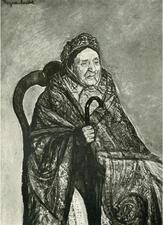
Regina Mundlak
Regina Mundlak was a skilled artist who exhibited her works in Warsaw at the Society for Promotion of Fine Arts and at the Aleksander Krywult Salon, and the Cassirer Salon in Berlin. She was interested in depicting Jewish life in the Diaspora, first through sketched portraits and later with oil paint. In 1942 she was probably deported from the Warsaw Ghetto to the Treblinka extermination camp.

Mela Muter
Mela Muter was the first professional Jewish woman painter in Poland. She immigrated to Paris in 1901, and her portraits, landscapes, and still lifes reveal the influence of major artistic currents of the turn of the century: synthetism of École de Pont-Aven, van Gogh’s expressionism, French fauvism, and cubism. Her works have been shown in exhibits throughout France and New York.
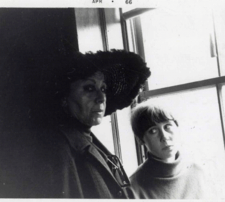
Louise Nevelson
Louise Nevelson belongs to a generation of Manhattan-based painters and sculptors whose careers coincided with the development of modernism in America. Nevelson created sculptures that audiences could both experience and see. Several of her pieces are now owned by the Whitney, the Brooklyn Museum, and MOMA.
Isadora Newman
Isadora Newman was a celebrated writer, storyteller, poet, and artist. Born in New Orleans, her stories often focused on Creole and Black life and legend and folktales from foreign countries. Her books were translated into many languages and she later became an accomplished painter and sculptor.
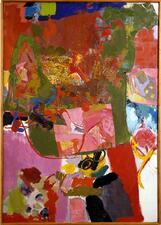
Lea Nikel
Lea Nikel, one of the central pillars of Israeli painting, had more than fifty years of magnificent creativity to her credit. She belonged to no art group or movement and over the years did not change her distinctive style, even when new styles became fashionable. Her works were exhibited throughout Israel from the early 1950s into the 2000s.
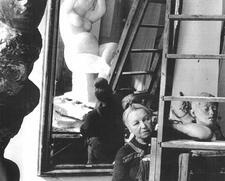
Antonietta Raphaël
Painting and sculptor Antonietta Raphaël rose to fame in the 1950s. Her paintings were seen for the first time in Rome in 1929; during World War II, she took up sculpting, and in the 1950s, she rose to prominence and exhibited her works worldwide.
Nacha Rivkin
Orthodox Jewish education for women in America began with the work of Nacha Rivkin, a founder of Shulamith School for Girls, the first girls’ yeshiva in the United States. A courageous and proficient “doer,” Rivkin broke out of the mold of the passive, religious homemaker in her commitment to action. Through her music and artwork, she expanded the range of career possibilities for Orthodox women of her time.

Sarah Rodrigues Brandon
Sarah Rodrigues Brandon (1798-1828) was born poor, enslaved, and Christian on the island of Barbados. By the time of her death thirty years later she was one of the wealthiest Jews in New York and her family were leaders in Congregation Shearith Israel. This entry explains Sarah’s life journey and highlights how her story relates to that of other women of mixed African and Jewish ancestry in early America.

Doris Rosenthal
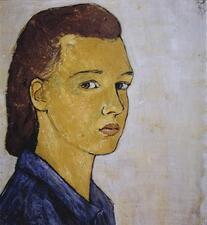
Charlotte Salomon

Beyle Schaechter-Gottesman
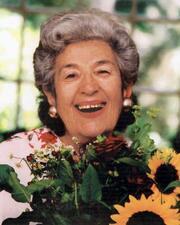
Miriam Schapiro
Miriam Schapiro helped pioneer the feminist art movement, both through her own pushing of creative boundaries and by creating opportunities for other women artists. Starting in 1970, Schapiro raised women’s consciousness through her writing, painting, printmaking, teaching and sculpture. She lectured extensively on feminist issues to professional conferences, university audiences, art classes and women’s groups.
Ruth Schloss
Through her socio-political artworks, Israeli painter Ruth Schloss (1922-2013) directed the viewer's attention to the human conditions of the downtrodden and marginalized in Israeli society from the 1940s through the early 2000s. She depicted figures and images people usually prefer to ignore, such as the poor and the unprivileged, the working class, newcomers, Mizrahi Jews, Palestinian refugees, the disastrous ruins of the wars in Israel, the Intifada in the occupied territories, women and children, newborns, and the elderly.
Sarah Shor
Sarah Shor, a painter, graphic artist, and theater designer, belonged to the modern Jewish cultural and literary circles of twentieth-century Russia and Ukraine. The notion of creating “modern Jewish art” influenced Shor’s artistic evolution, and works on Jewish motifs occupy a significant place in her oeuvre.


